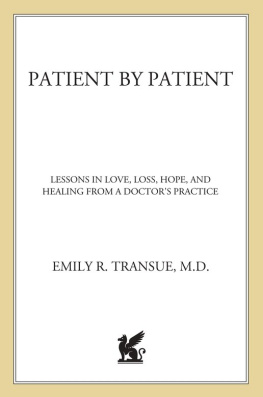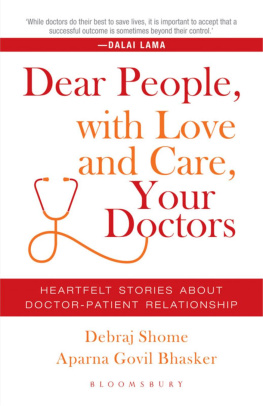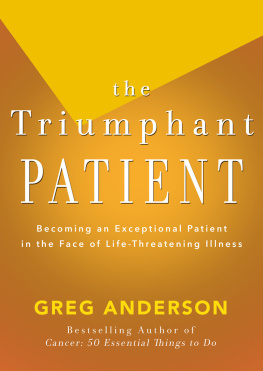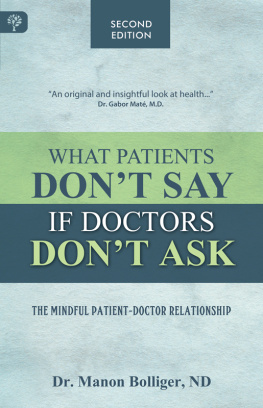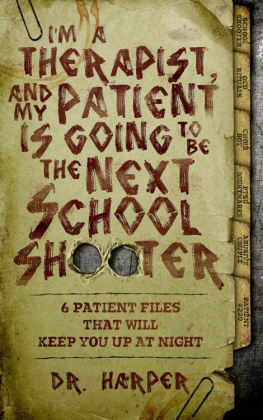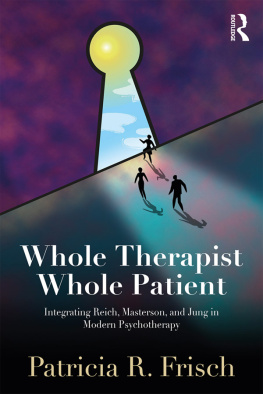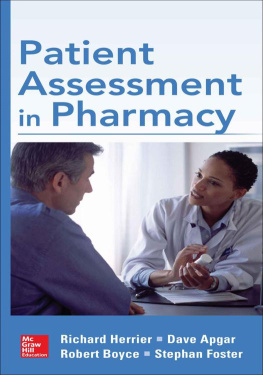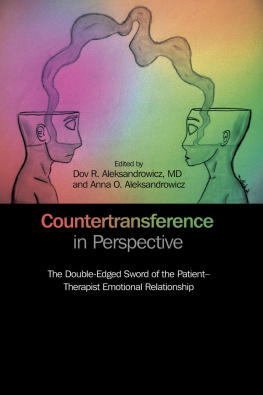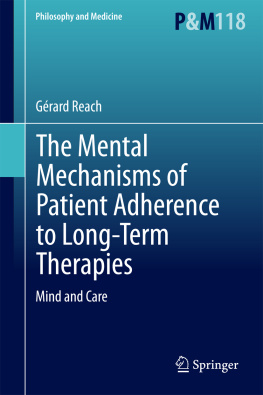The Patients Brain
The neuroscience behind the doctorpatient relationship
The Patients Brain
The neuroscience behind the doctorpatient relationship
Fabrizio Benedetti, M.D.
Professor of Physiology and Neuroscience
Department of Neuroscience
University of Turin Medical School
and
National Institute of Neuroscience
Turin, Italy


Great Clarendon Street, Oxford OX2 6DP
Oxford University Press is a department of the University of Oxford.
It furthers the Universitys objective of excellence in research, scholarship,
and education by publishing worldwide in
Oxford New York
Auckland Cape Town Dar es Salaam Hong Kong Karachi
Kuala Lumpur Madrid Melbourne Mexico City Nairobi
New Delhi Shanghai Taipei Toronto
With offices in
Argentina Austria Brazil Chile Czech Republic France Greece
Guatemala Hungary Italy Japan Poland Portugal Singapore
South Korea Switzerland Thailand Turkey Ukraine Vietnam
Oxford is a registered trade mark of Oxford University Press
in the UK and in certain other countries
Published in the United States by Oxford University Press Inc., New York
Oxford University Press, 2011
The moral rights of the author have been asserted
Database right Oxford University Press (maker)
First published 2011
All rights reserved. No part of this publication may be reproduced, stored in a retrieval system, or transmitted, in any form or by any means, without the prior permission in writing of Oxford University Press, or as expressly permitted by law, or under terms agreed with the appropriate reprographics rights organization. Enquiries concerning reproduction outside the scope of the above should be sent to the Rights Department, Oxford University Press, at the address above
You must not circulate this book in any other binding or cover
and you must impose the same condition on any acquirer
British Library Cataloging in Publication Data
Data available
Library of Congress Cataloging in Publication Data
Data available
Typeset in Minion by Glyph International, Bangalore, India
Printed in Great Britain
on acid-free paper by
CPI Antony Rowe, Chippenham, Wiltshire
ISBN 9780199579518
10 9 8 7 6 5 4 3 2 1
Oxford University Press makes no representation, express or implied, that the drug
dosages in this book are correct. Readers must therefore always check the product
information and clinical procedures with the most up-to-date published product
information and data sheets provided by the manufacturers and the most recent codes of
conduct and safety regulations. The authors and the publishers do not accept responsibility
or legal liability for any errors in the text or for the misuse or misapplication of material in
this work. Except where otherwise stated, drug dosages and recommendations are for the
non-pregnant adult who is not breastfeeding.
To the memory of my mother
Contents
There is a vast amount of literature on what has often been called doctorpatient relationship, patientprovider interaction, therapistpatient encounter, and such like. This special, and indeed intriguing, social interaction has been analysed from different perspectives, so that today the medical, psychological, social, philosophical, and even socioeconomical and health-policy literature is full of accounts and essays that deal with this topic. Needless to say, this literature has provided valuable information to physicians, health professionals, psychologists, philosophers, and policymakers. Basically, what has emerged in the course of the years is that not only should health professionals develop and take care of their own technical skills, but that they also should strengthen their social skills in order to better interact with their patients. This might seem quite obvious indeed, nonetheless a large amount of scientific investigation has provided compelling evidence that not only is a good doctorpatient relationship desirable because politeness is better than rudeness, but also because the former may have beneficial effects on health, whereas the latter may lead to negative outcomes.
With the recent advances of neuroscience, I believe we are today in a good position to also describe and discuss the biological mechanisms that underlie the doctorpatient relationship. No attempt of this kind has been made thus far and the task is not an easy one. Many neuroscientific facts must be put into the context of the clinical setting, routine medical practice, social issues, and psychological theories, in order to provide evidence that the doctorpatient relationship can indeed be approached in neurobiological terms.
Neuroscience is a very broad discipline, and actually many sub-disciplines do exist, like molecular and cellular neuroscience, as well as cognitive neuroscience. Social and cognitive neuroscience are in a good position to tackle the doctorpatient relationship from a biological perspective, for many neurobiological underpinnings of complex social interactions have been unravelled in recent years and many neuroscientific hypotheses have been put forward. For example, we now know that different physiological and biochemical mechanisms take part in complex functions, like trust, hope, empathy, and compassion, which are all key elements in the therapistpatient encounter. If on the one hand the patient must trust and hope, on the other hand the therapist must be empathic and compassionate.
Neuroscientific facts should also be put into an evolutionary context. Neuroscience investigates biological systems, and any simple or complex neurobiological system is a product of evolution which has emerged in animals and humans with a precise and specific purpose. For example, brain circuits subserving trust have emerged in the course of evolution in order to strengthen social interactions. Trustworthy behaviour is a prosocial behaviour, and if the patient who seeks relief does not trust therapists and therapies, the doctorpatient encounter has no meaning to exist at all. Therefore, an evolutionary understanding of why and how these social mechanisms have emerged and have evolved is of paramount importance. They give us insights into the evolutionary emergence of altruism and subsequent medical care.
In this book I propose to give scientific facts on the most recent discoveries and advances of neuroscience that can explain both the biological systems involved in the doctorpatient interaction and their evolutionary meaning. The basic concept is that from a neuroscientific perspective, I aver, the doctorpatient relationship can be subdivided into at least four steps. The first is feeling sick, a key starting point that triggers the subsequent behaviour. Neuroscience has a lot to say about feeling sick. It involves sensory systems and cortical areas that generate conscious awareness, and indeed the perception of a symptom, like pain, is the product of bottom-up processes and top-down modulation. The second step is seeking relief, a kind of motivated behaviour which is aimed at suppressing discomfort. This behavioural repertoire is not very different from the one aimed at suppressing hunger or thirst, and the brain reward circuits are of great importance in this regard. The third step is meeting the therapist, a special and unique social encounter whereby the therapist represents the means to suppress discomfort. Here many intricate mechanisms are at work, such as the patients trust and hope and the therapists empathy and compassion. Neuroscience is beginning to understand these complex functions and, interestingly, not only can we study the patients brain but we can also have a look into the doctors brain, in which many regions are responsible for empathic and compassionate behaviour. Finally, the fourth step is receiving the therapy, the final act of the doctorpatient interaction. The mere ritual of the therapeutic act may generate therapeutic responses (placebo responses) which sometimes may be as powerful as those generated by real medical treatments. In this regard, the present book wants to put the placebo effect into a broader context compared to my previous book


